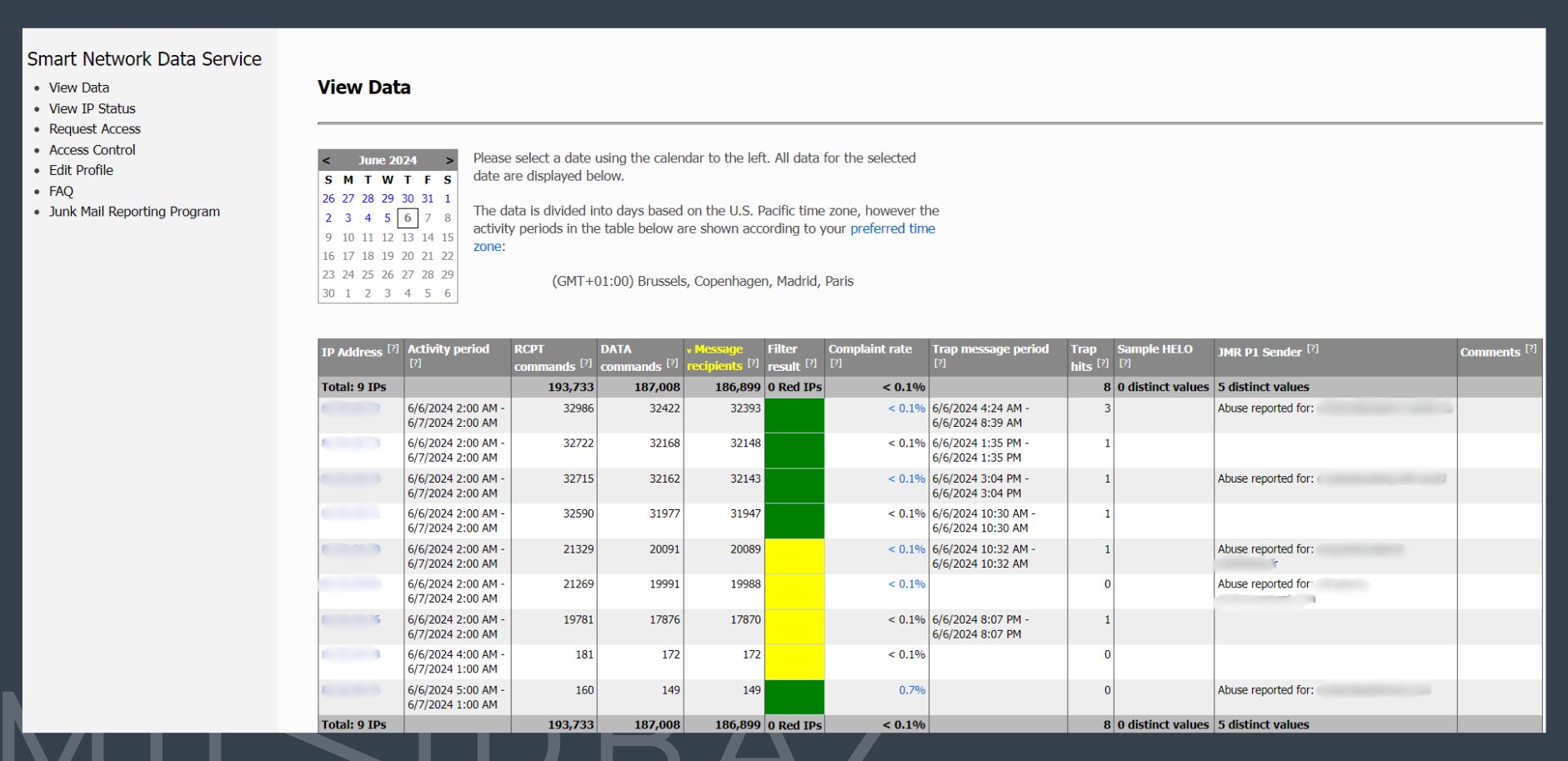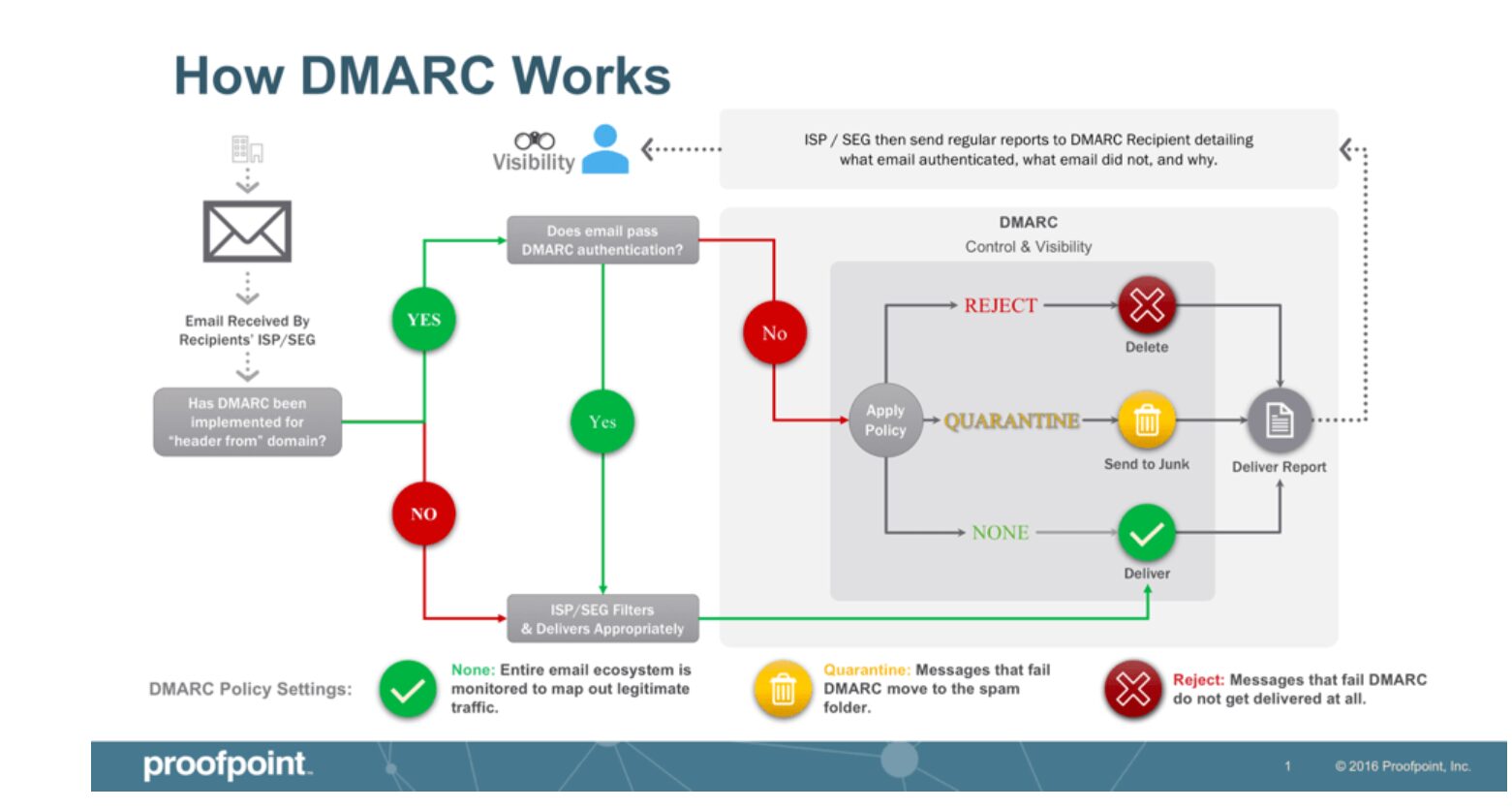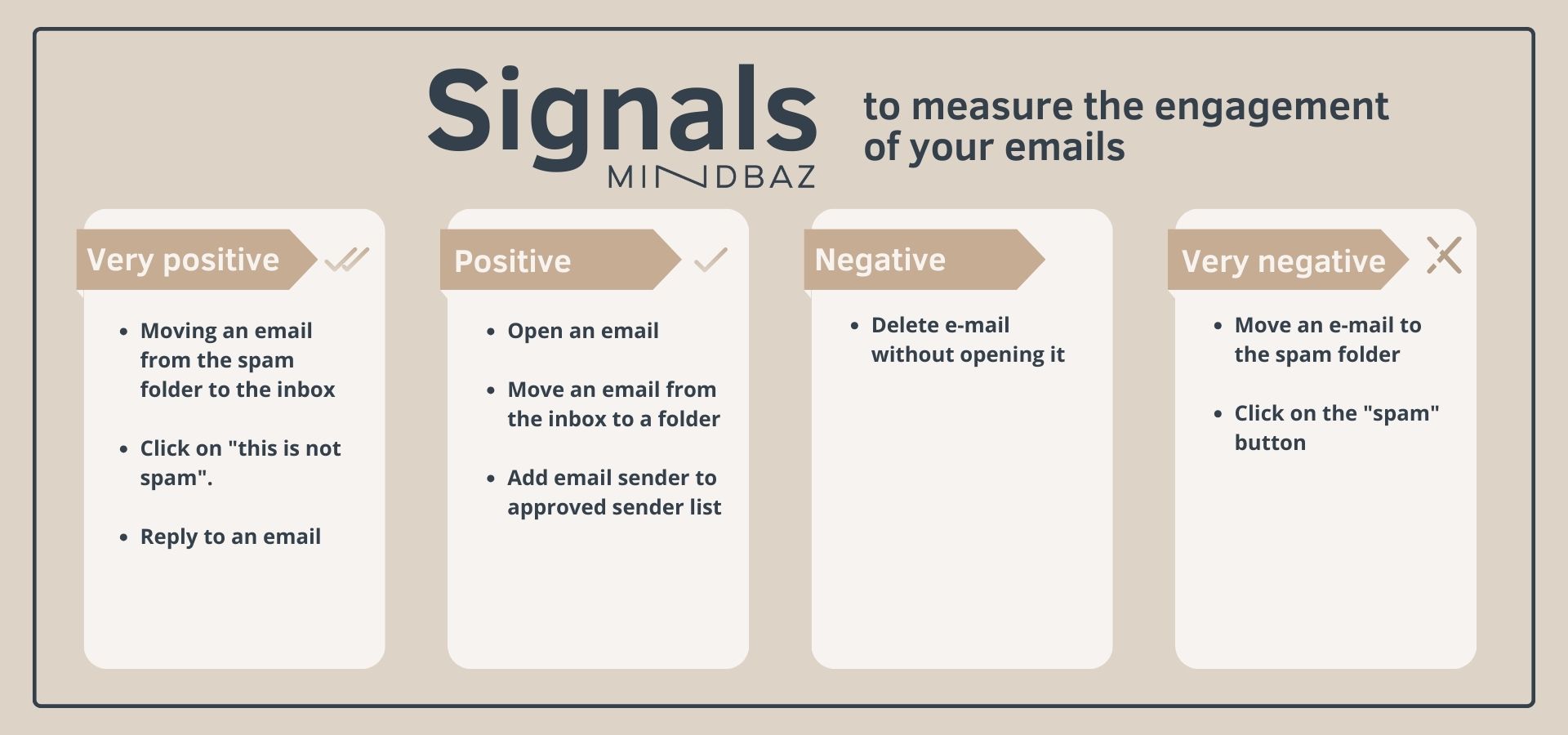After Gmail and Yahoo!’s update on new standards for bulk email senders in early 2024, it’s now Microsoft’s turn. Although the American giant has yet to make an announcement, it recently shared its guidelines and objectives for this new update.
4 takeaways from Microsoft's announcements for email senders
- Microsoft reinforces best practices for bulk email senders
- Email authentication (DMARC, SPF, DKIM) can no longer be neglected.
- Microsoft stresses the importance of a valid DNS record
- The American webmail joins Gmail and Yahoo! in lowering complaint limit
These best practices should have a direct impact on your deliverability, i.e. the likelihood of your emails reaching the inbox.
We'll update this article as soon as Microsoft shares new information for email senders.
Technology and email deliverability: Message authentication
Microsoft SNDS: how to understand email deliverability issues
Microsoft Smart Network Data Services (SNDS) enables email senders to collect data on their deliverability. With these results, brands can understand deliverability incidents and implement best practices.
For each IP, Microsoft Smart Network Data Services reports on
- Email activity periods
- Number of emails sent to Microsoft per IP
- Number of messages accepted by Microsoft
- The number of filtered emails (considered spam by Microsoft)
- Complaint rate
Microsoft SNDS is an interesting service for monitoring your IP reputation.
Mindbaz’s email solution tracks user data via Microsoft SNDS. This enables our experts to clarify incidents and adapt their recommendations.
Our team cross-references data from several sources to provide the best possible support to help you improve your email deliverability.

Use SPF (Sender Policy Framework)
SPF checks if the email comes from an authorized server. Add an SPF record to your DNS to list authorized IP addresses. The aim is to reduce the risk of identity theft and spoofing.
Definition: Spoofing refers to sending emails pretending to be a known person or company to get personal information.
Implement DKIM (DomainKeys Identified Mail)
DKIM adds a digital signature to the email to confirm its authenticity. To comply with supplier best practices in 2024, you need to enter a DKIM key and add it to your DNS.
This enables incoming mail servers to check the signature to ensure that the email has not been tampered with.
Good to know:
DNS is a computer system that translates domain names (such as “mindbaz.com”) into IP addresses (a string of numbers). An IP address is a unique identifier assigned to a device connected to the Internet.
Set up DMARC (Domain-based Message Authentication, Reporting & Conformance)
DMARC relies on SPF and DKIM to authenticate emails.
As a sender, you need to add a DMARC record to your DNS to tell incoming mail servers how to handle unauthenticated emails.
This action helps distinguish legitimate emails from fraudulent ones more quickly.

Complaint rates: what do email providers recommend?
The importance of complaint rates for email senders
The complaint rate is an important indicator for any company that sends out email campaigns.
If recipients regularly report your emails, it can send a very negative signal, which email providers like Microsoft monitor closely. They may penalize you by reducing your deliverability.
Complaint rates by email provider
Some webmails provide transparent information on the complaint rate limit that must not be exceeded:
- Orange: You can’t exceed 1%, or risk having your sender IPs blacklisted, or seeing most of your emails rejected.
- Gmail : Google’s email provider is even tougher on bulk email senders, capping the maximum complaint rate at 0.3%.
- Yahoo!: Aligned with Gmail, the American giant has also limited complaints to 0.3%.
- La Poste : La Poste has set a limit of 1% for email campaign complaints.
- SFR: Like the rest of the French providers, SFR limits the complaint rate to 1%.
Please note that these are official webmail figures. But depending on your other indicators (click-through rates, openings…), you could even be penalized for being below these limits…
As for the other email providers, although no limits have been specified, they all keep a close eye on their users’ feedback. Watch out!
Microsoft has not yet announced a complaint rate limit. However, it is likely to follow in the footsteps of Gmail and Yahoo! by lowering the threshold currently allowed.
We will update this article as soon as new information is released.

What can I do to avoid exceeding the maximum complaint rate?
With a 0.3% complaint limit, Gmail and Yahoo! are clearly announcing the importance of this indicator and the priority given to user feedback.
Mindbaz’s deliverability experts advise you to keep your complaint rate around 0.1% to prevent any deliverability incidents.
Keep a close eye on your complaint rate with Postmaster Tools.
Reminder: Gmail and Yahoo! introduce stricter best practices for email senders
Gmail and Yahoo! updates require you to
- Authenticate your sending domain (SPF, DKIM, DMARC)
- Enable quick unsubscribe directly in the webmail (List Unsubscribe OneClick)
- Have a low spam rate (under 0.3%)
Find out more about the latest news for 2024 from Yahoo! and Gmail here
sources
